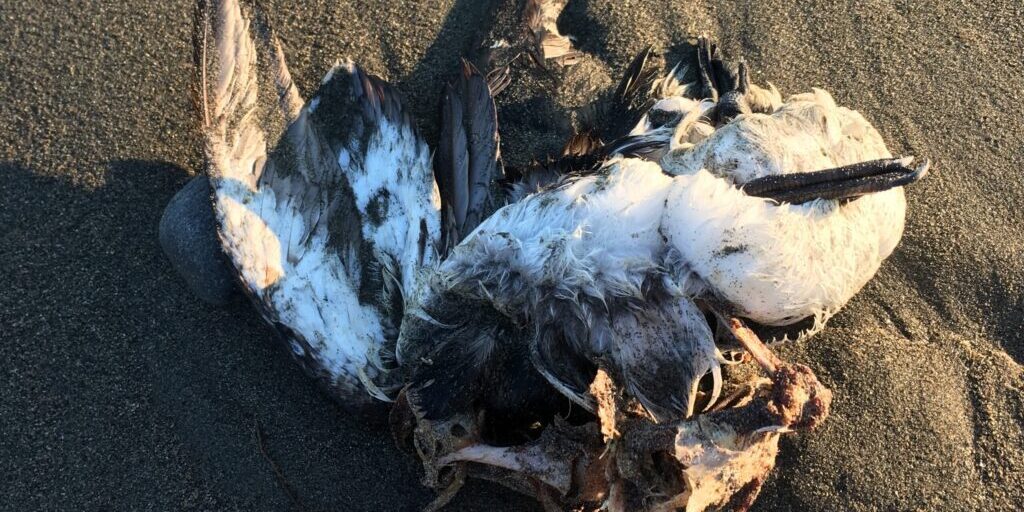Throughout the month of June, dead marine life was being reported on a weekly basis in the Bering Strait region.
First it was a dead walrus in St. Michael, then a large group of blue mussels near Port Clarence, and more recently, it was several types of seabirds and fish near Shishmaref.
“People in Shishmaref reported some birds washing up: sounds like mostly thick-billed murres, and people in Savoonga also had a murre die-off earlier in May.”
That’s Kathy Kuletz, the seabird coordinator for the U.S. Fish & Wildlife Service. She’s been working with local observers like Andrew Kakoona and Ken Stenek as well as other scientists. During the last three weeks of June, Stenek reported over 30 dead birds on a stretch of Shishmaref’s east beach, under a mile and a half long.
Gay Sheffield, with Alaska Sea Grant, confirmed she returned from her travels in the Bering Strait region this week to take samples and report on some of those die-offs. However, Sheffield said she could not provide more details until her reports are finished.
While Sheffield is tending to that, Kuletz’s role involves coordinating shipments of samples and carcasses of the dead seabirds, so they can be sent to the National Wildlife Health Center in Wisconsin.
“We will be getting some carcasses from Shishmaref of sick or dying birds that had washed up sick and then died. In that case, there were also reports of mounds of krill that was dead and mixing with some fish. So that’s a concern; that indicates something else is going on in the system.”
According to Kuletz, the numbers reported are relatively small: there have not been any big die-offs so far this season. And she says there are usually some dead birds found on the coast every year.
“But in concentrated numbers, where you get 20, 30, 50 or more birds at a time, that’s unusual. And it’s also very unusual up in the far north, in the Bering Strait region.”
Something else unusual happening in the region that some scientists say could be related, is ocean waters getting drastically warmer. Climatologist Rick Thoman, with the Alaska Center for Climate Assessment and Policy, says by the end of June, sea surface temperatures in the Norton Sound were anywhere from six to 12 degrees Fahrenheit above normal.
“In the Sound, temperatures at this point are mostly in the 50s to the east of Nome, and those warm temperatures are spreading westward, and nearshore temperatures are up around 60 degrees again. (This is) far above normal for this time of year.”
In addition, Thoman says the Northern Bering Sea this year, from the Pribilofs northward, featured the warmest sea surface temperatures ever recorded for May and June. The average temperature is five degrees Fahrenheit above normal.

Dean Stockwell, a biologist with the University of Alaska Fairbanks Marine Science Program, says when there are warm sea surface temperatures like this, “Alexandrium cysts can hatch and create algal blooms.”
According to Stockwell, there was also a dead bowhead whale reported, floating near Shishmaref.
All of this is happening at a time when unusually high numbers of ice seal deaths are occurring in the region, which the National Oceanic and Atmospheric Administration is investigating. Scientists don’t yet know what has caused any of these creatures to die, but they emphasize the importance of reporting these events and collecting samples while they search for answers.
Kuletz says necropsy results could come back from the lab in Wisconsin within a few weeks of whenever the lab receives their latest samples. However, it could take months before toxicology reports are ready.
If you observe unusual, dead, or dying wildlife in your community, please contact the Alaska LEO Network or your local Bering Strait Marine Advisory Program hotline: 907-434-1149.
Image at top: file photo: A dead murre that washed ashore in Nome in June 2018. Photo: Zoe Grueskin, KNOM.




